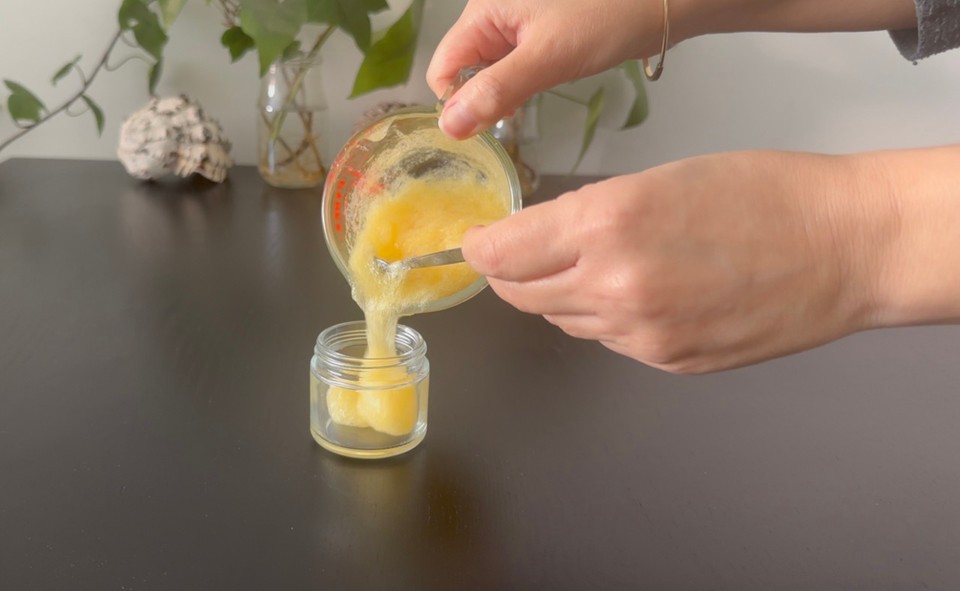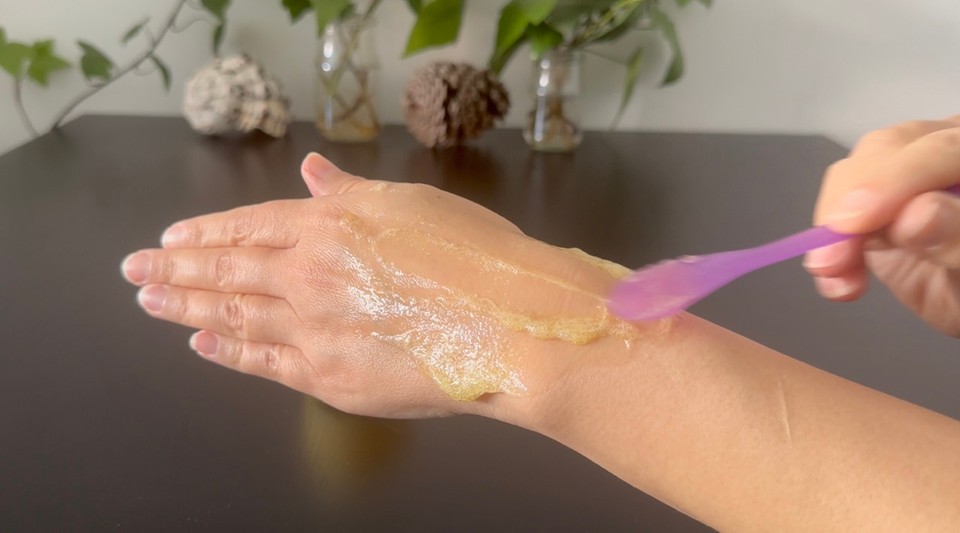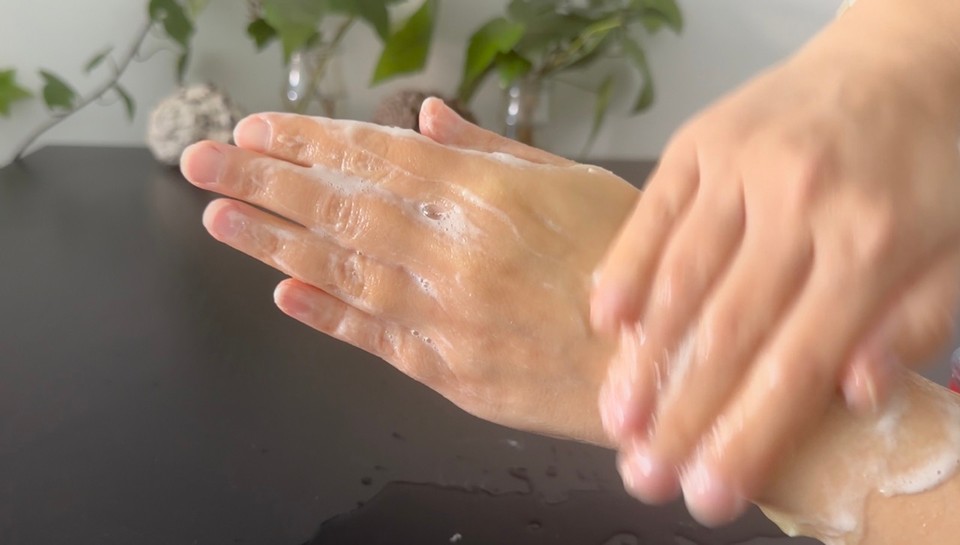Kojic Acid Face Mask
| Phase | Ingredient | Percent (%) | Weight (g) |
|---|---|---|---|
| Phase A | Glycerin | 8.0 | 8 |
| Xanthan gum soft | 2.0 | 2 | |
| Phase B | Jasmine hydrosol (INCI - Jasminum sambac flower water) | 75.6 | 75.6 |
| Allantoin | 0.4 | 0.4 | |
| Phase C | Decyl glucoside | 6.0 | 6 |
| Phase D | Citric acid | 1.4 | 1.4 |
| Phase E | Kojic Acid | 1.0 | 1 |
| Papain (INCI - Glucose, Papain) | 0.6 | 0.6 | |
| Papaya extract | 2.0 | 2 | |
| Pentylene Glycol | 2.0 | 2 | |
| Phase F | Cosgard (INCI - Benzyl Alcohol, Dehydroacetic Acid, Aqua) | 1.0 | 1 |
*** Optional a few drops of cosmetic dye color
You can help support my website and channel through the “buy me a coffee” page.
Here is the link: https://www.buymeacoffee.com/diycosmetica
Your support helps me keep sharing here more information and more formulas.
This face mask contains 1% Kojic acid and is designed to help with pigmentation and dark spots on the skin. Please read the entire post to get all the information before making the face mask.
Kojic acid, a natural compound derived from fungi (from the fermentation process of certain foods like soy sauce and rice wine), has been used in cosmetic formulations for its skin-lightening properties. Kojic acid inhibits melanin production in the skin (melanin is the pigment responsible for skin color), It does so by blocking the activity of tyrosinase, an enzyme necessary for melanin synthesis. When melanin production is reduced, this gradually leads to the lightening of the skin in hyperpigmented areas, helping even out skin tone and reducing the appearance of dark spots, sun damage, melasma, and scars.
The optimal usage rate in face products is usually around 1% to ensure effectiveness without irritation.
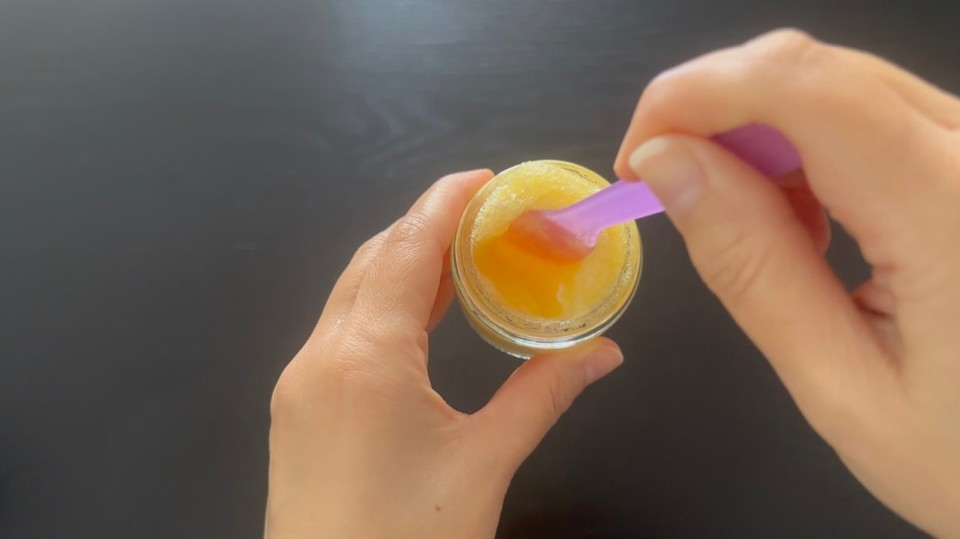
For products containing kojic acid, including face masks, usage up to twice a week is recommended (this frequency allows the skin to benefit from its properties without overexposure). Consistent use of a kojic acid-infused face mask can lead to noticeable results, including a brighter complexion and reduced visibility of skin discolorations.
While kojic acid is effective in treating hyperpigmentation, it may cause irritation for those with sensitive skin types. It's always recommended to perform a patch test before using any new product.
At the end of the post, I added links with more information on kojic acid.
Check this post here if you want to make a glycolic acid foam cleanser.
This formula combines more active ingredients and a surfactant for easy mask application and removal.

In phase A, I used xanthan gum soft. Xanthan Gum Soft is designed to deliver a gentler and more refined texture than normal xanthan gum. It provides formulations with a smoother consistency and is ideal for products that benefit from a lighter, more subtle feel. Particularly valued for its ability to yield clear gels, Xanthan Gum Soft ensures transparency in formulations, avoiding the potential cloudiness linked with regular xanthan gum. I used 8% of glycerin for deep hydration in the final product; glycerin ensures that the skin remains moisturized.
In phase B, I used Jasmine hydrosol (which you can replace with distilled water) and allantoin.
Jasmine hydrosol, fragrant water obtained from the steam distillation of jasmine flowers, has soothing properties that can calm irritated and inflamed skin, and it is rich in antioxidants; it also tones the skin, helping to refine the appearance of pores for a smoother, more refined skin texture. The hydrosol also adds a fresh floral scent to the face mask.
Allantoin is known for its moisturizing and soothing properties and can calm irritated skin. It also acts as a humectant, attracting moisture to the skin and locking it in. Although allantoin can be derived from several sources, in the cosmetics industry today, it is more commonly synthesized in a laboratory to ensure purity, stability, and suitability for all skin types, including sensitive ones. To avoid shards in the final product, I heated the allantoin with the hydrosol at more than 50-55˚C (122˚F) for 20 minutes to ensure it was completely dissolved. If you don't have allantoin, skip this ingredient and add the amount to the glycerin to balance the formula to 100%.

Phase C is the surfactant: Decyl glucoside. It is a mild, non-ionic surfactant with gentle cleansing properties. Adding a mild surfactant like decyl glucoside to this jelly face mask makes it easy and effective to wash the mask from the skin. It also enhances the formula's spreadability, ensuring it glides smoothly over the skin for an even application. The surfactant helps to achieve the "clean" skin feeling once the mask is rinsed off the face.
In phase D, I added citric acid. Citric acid is a natural alpha hydroxy acid (AHA) that acts as a pH adjuster and adds gentle exfoliation properties to the face mask. It is also a chelating agent (by binding to metal ions that may be present in water or other ingredients, citric acid helps prevent the degradation of the product); by neutralizing metal ions, citric acid ensures that these ions do not interfere with the performance of the active ingredients in the face mask.
Phase E is the phase with the active ingredients of this face mask. I used Kojic Acid at 1%. Using Kojic Acid at a 1% concentration in this face mask effectively diminishes melanin production, which in turn helps lighten areas of hyperpigmentation, age spots, and damage from sun exposure, leading to an improved and more uniform skin tone. This specific concentration offers a good balance, optimizing the ingredient's skin-lightening capabilities while also minimizing the likelihood of skin irritation. Maintaining the concentration at 1% helps to avoid the risk of skin reactions, making it safer for regular use of this face mask.
Consistent use of this face mask that contains 1% Kojic Acid can significantly improve skin tone and texture after some time.
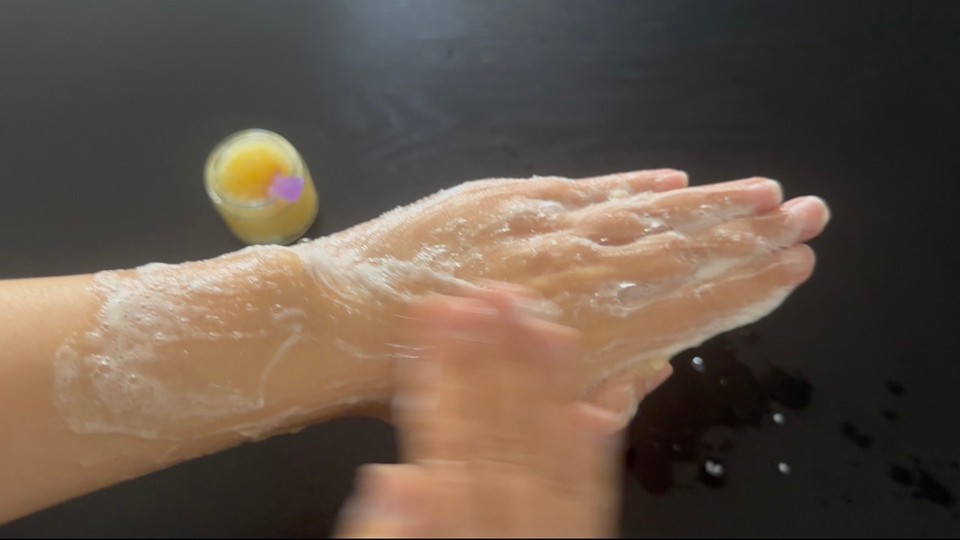
Along with Kojic Acid, I used Papain powder at 0.6%. Papain is an enzyme extracted from the papaya fruit that helps remove dead skin cells. The exfoliating action can also help diminish the visibility of dark spots, age spots, and other forms of hyperpigmentation and unclog pores. Papain enhances the face mask by adding gentle exfoliation that improves the skin brightness while being sufficiently mild (due to low percentage used) for a variety of skin types. Papain can still cause an allergic reaction in sensitive skin (even in low percentage), so if you want to skip it, add the amount of the papain to the hydrosol.
The other two active ingredients I used in phase E are Papaya extract and Pentylene Glycol.
Papaya extract serves as an effective natural exfoliant, similar to papain, aiding in eliminating dead skin cells. Its enzymes and alpha-hydroxy acids (AHAs) collaborate to illuminate the skin and diminish dark spots and hyperpigmentation. Known for its moisturizing benefits, papaya extract ensures the skin remains hydrated and full, helping to lessen the appearance of fine lines and wrinkles. Packed with antioxidants like vitamin C, it shields the skin against environmental harm such as pollution and UV rays. Its anti-inflammatory qualities offer relief to irritated and sensitive skin. Furthermore, vitamins A and C in papaya extract nourish the skin and stimulate collagen production, which keeps the skin elastic and firm. You can replace the papaya extract with pumpkin extract, pineapple extract or licorice root extract. If you don’t have any of these extracts you can use aloe vera extract or aloe vera liquid instead.
Pentylene Glycol is a humectant that helps attract moisture to the skin and helps to retain it, making it appear more smooth. Pentylene Glycol is a humectant (with skin-conditioning properties) that attracts moisture to the skin and helps retain it, making it appear smoother. Pentylene Glycol also functions as a preservative booster due to its antimicrobial properties. You can replace it with propanediol, butylene glycol or glycerin.
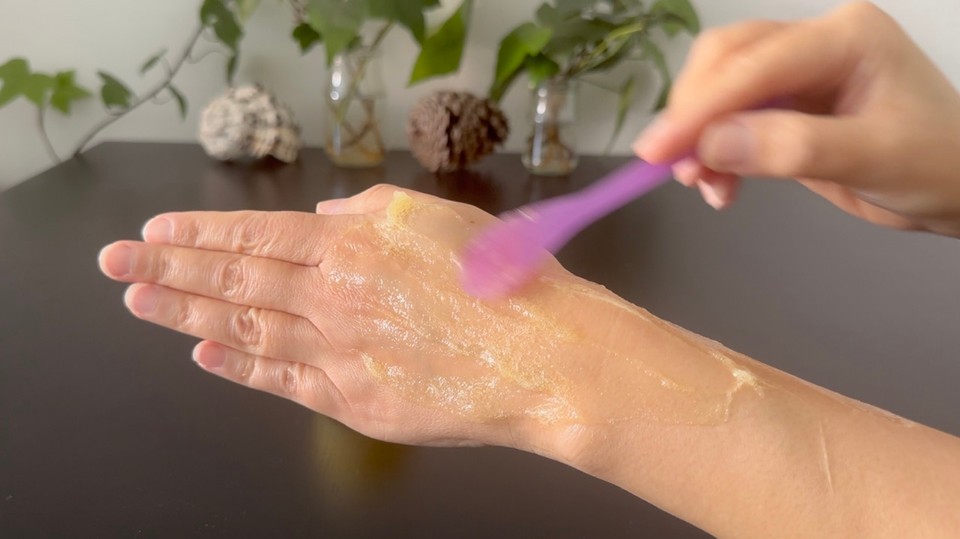
The last phase is phase F with the preservative. I used Cosgard, which you can replace with a different preservative. Make sure to use your chosen preservative according to your supplier's instructions. If you need to use more than 1%, adjust the formula by subtracting the added preservative amount from the hydrosol or distilled water.
I didn't add fragrance to this formula. If you wish to add fragrance to this face mask, you can add 0.5% fragrance and subtract 0.5% from the hydrosol or distilled water. You can mix the fragrance with the Decyl glucoside in phase C. Decyl glucoside has some emulsifying properties and can help to incorporate the fragrance into the mixture. If you use fragrance or essential oil, check the maximum usage rate and use a skin-safe fragrance. Since I used Jasmine hydrosol, the final product has a gentle floral scent.
The final pH should be around 4.5-5. Kojic Acid remains effective within the pH range of 3.5 to 6.0, Allantoin is still effective when pH is more than 4 and Papain's pH range is 4 to 7 (according to the supplier). If you use different ingredients, you might need to change the amount of citric acid or adjust the final pH of the formula. To read more about pH adjustments in cosmetics, please check this post here.
I used a cosmetics dye color to make the final product more vibrant but you can skip the color.
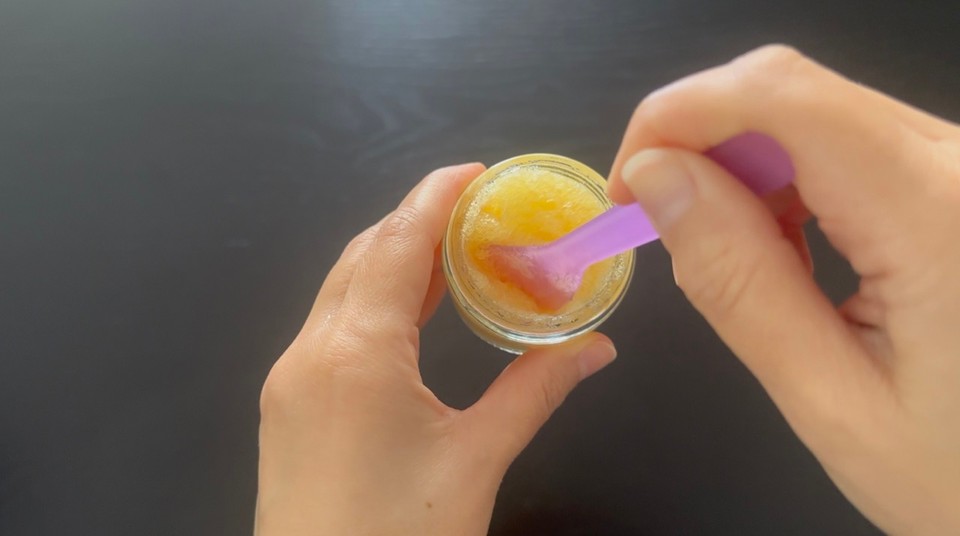
When using face masks with Kojic Acid and papain, it's really important to use sunscreen (SPF). Kojic Acid lightens the skin by reducing melanin, which naturally protects us from the sun's rays. So, with less melanin, the sun can damage your skin more easily. Papain, which helps peel away dead skin, makes your fresh new skin more open to sun damage. Since both ingredients can make your skin more sensitive to the sun, wearing sunscreen is necessary to keep your skin safe.
To use the mask, apply it to cleansed skin, avoiding the eye and lip areas. Leave on for 20 minutes and rinse with water. The decyl glucoside creates a gentle foam that helps rinse the mask and leaves the skin clear and clean.
Use the calculator to adjust the amount you want to make.
You can find more information on Kojic acid here:
https://pubmed.ncbi.nlm.nih.gov/30537675/
https://www.bostondermadvocate.com/science-of-skincare/kojic-acid-ultimate-dermatologist-guide
https://www.medicalnewstoday.com/articles/319599#is-kojic-acid-safe
Method:
In a heat-resistance beaker, Mix the glycerin and the gum to create a slurry.
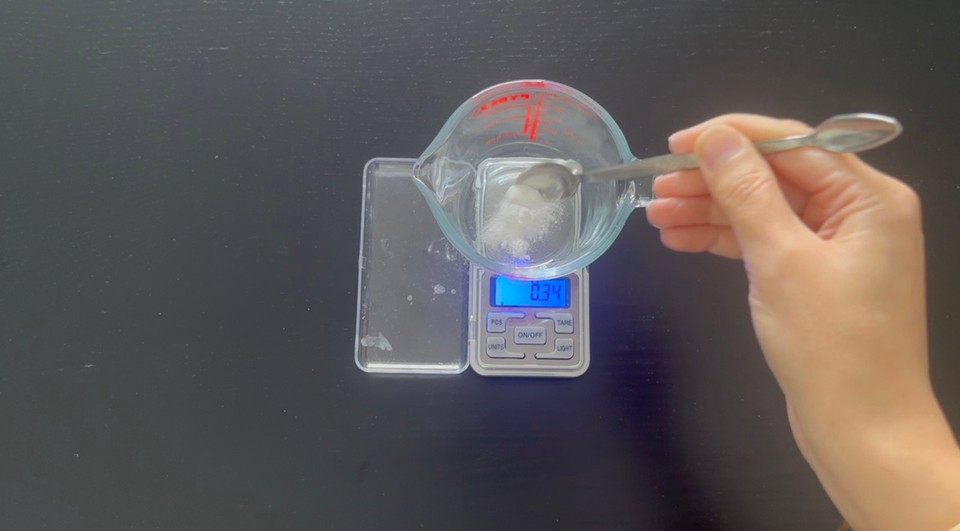
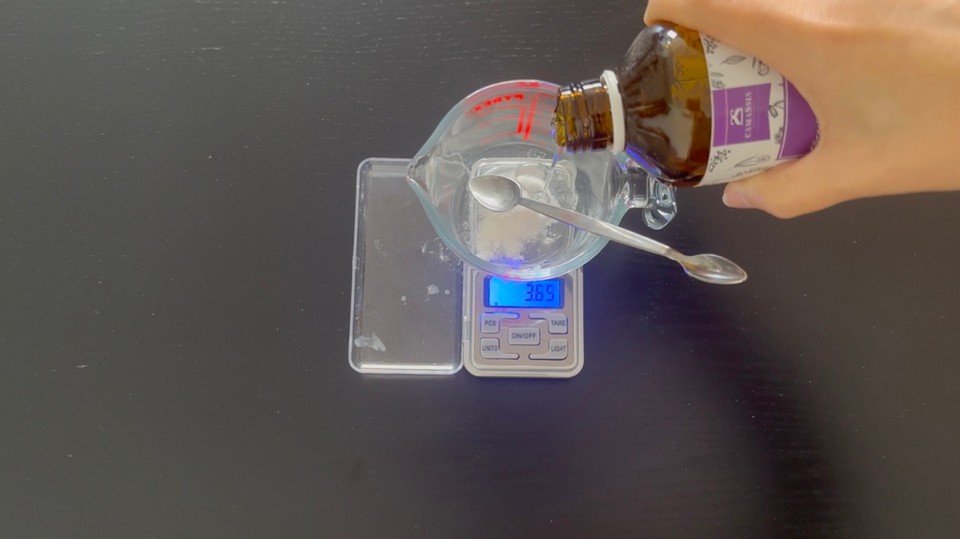

Add the hydrosol and the allantoin to the slurry (mix with a high speed blender to combine) and place the beaker into a double boiler for 20 minutes. Check that the temperature is around 55-60˚C to ensure the allantoin dissolves completely. Cover the beaker to minimize evaporation. You can also scale the beaker with phases A and B before and after removing it from the heat and add the amount of hydrosol that was evaporated during the heating.
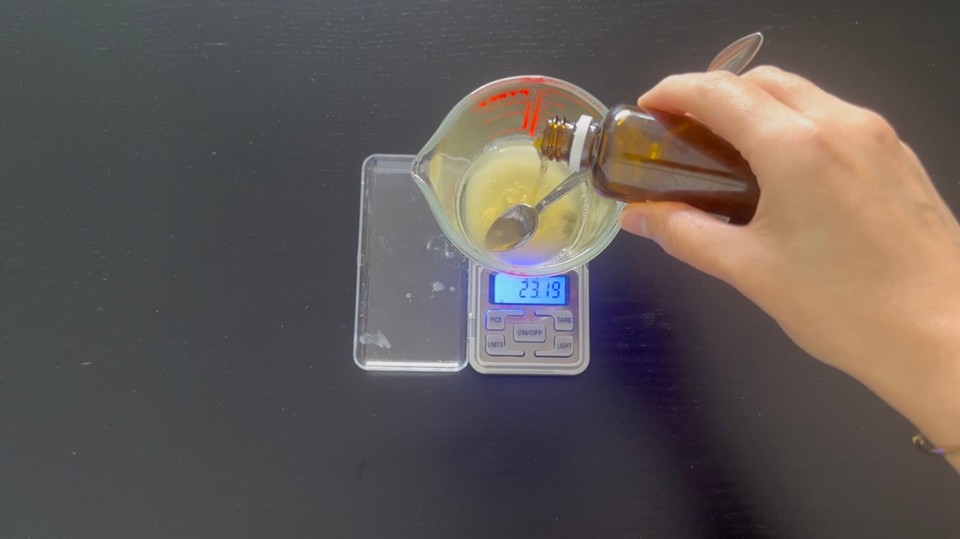
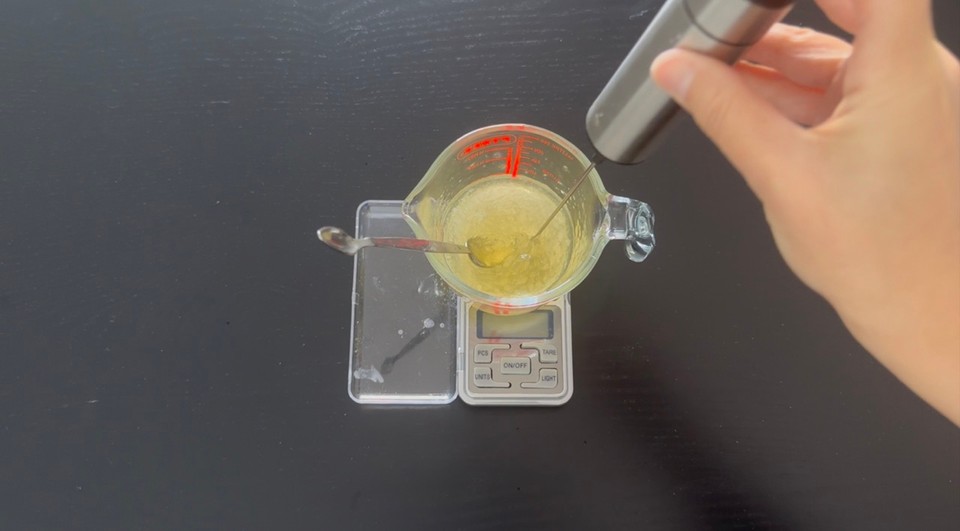
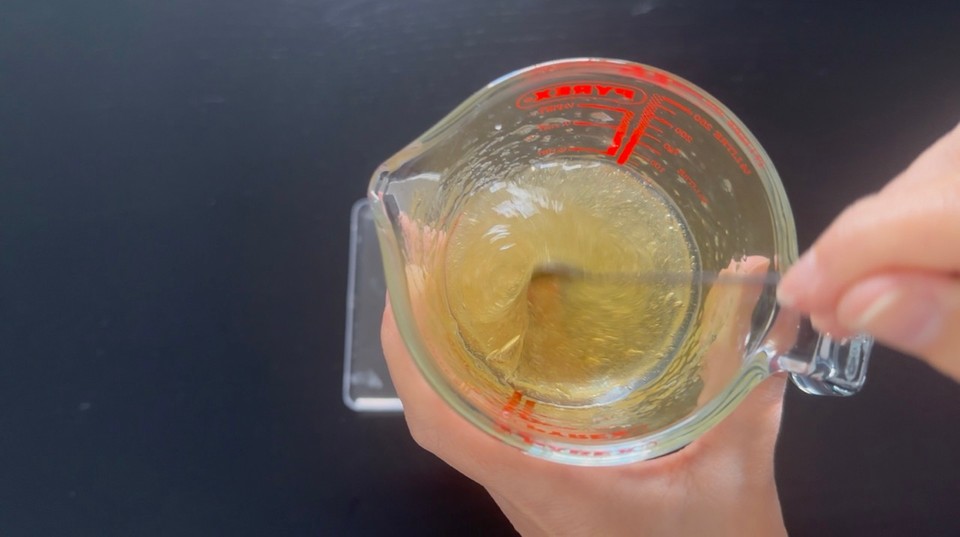
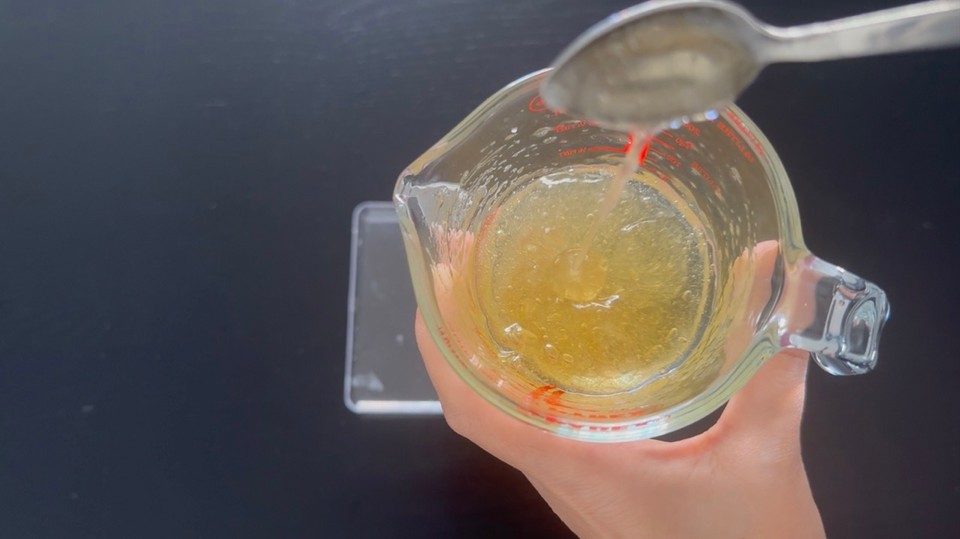
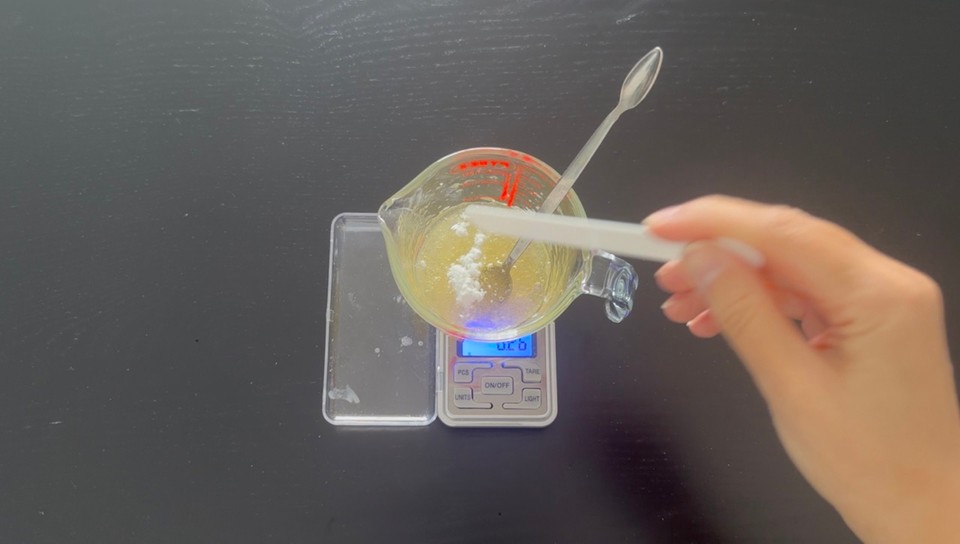
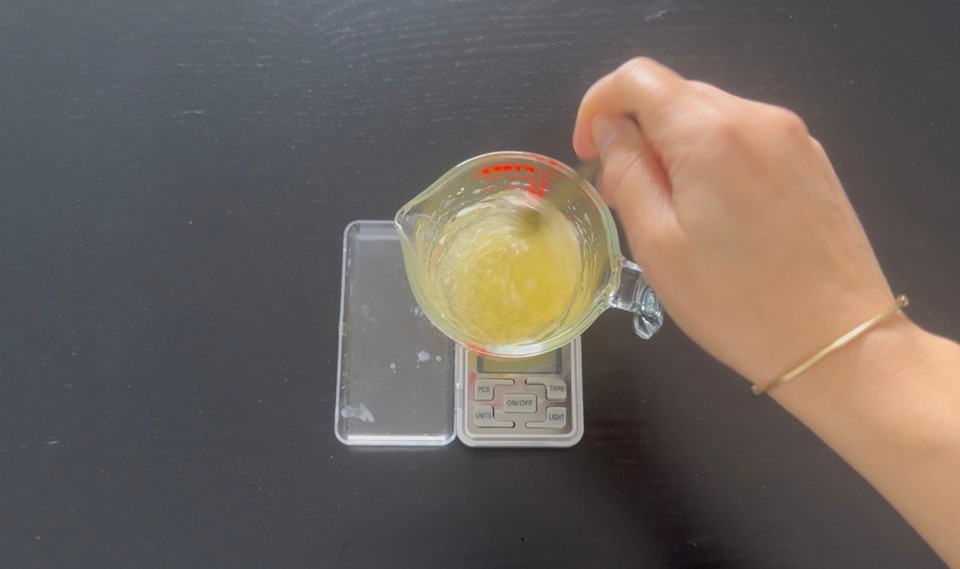
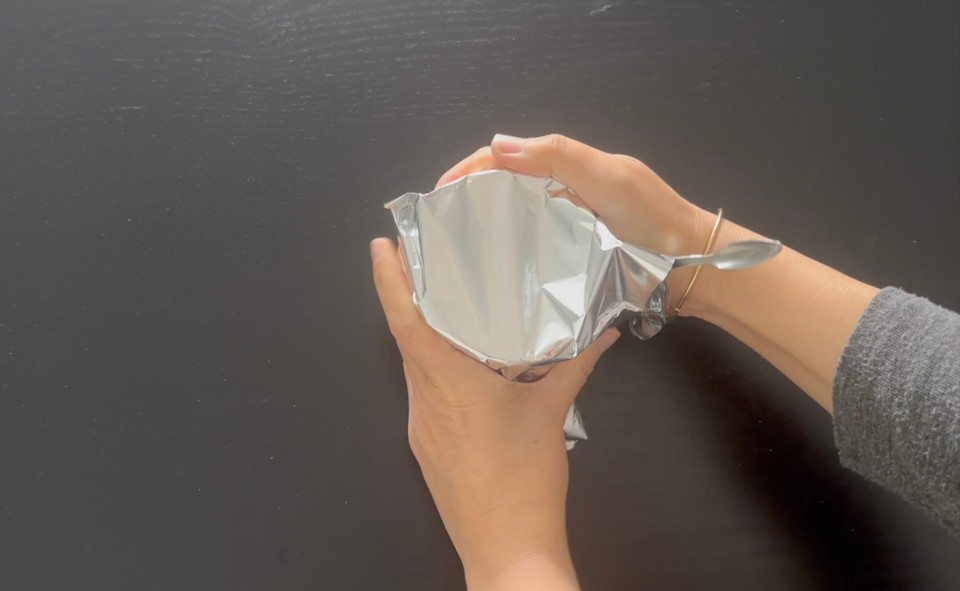
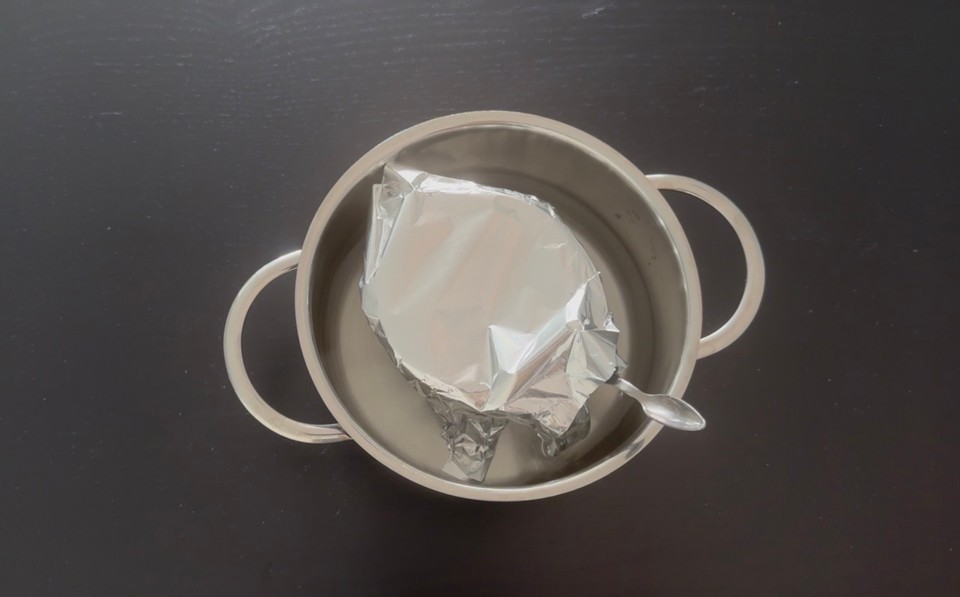
Let the mixture cool down to less than 40˚C before adding phase C. Add the decyl glucoside and mix gently to combine.
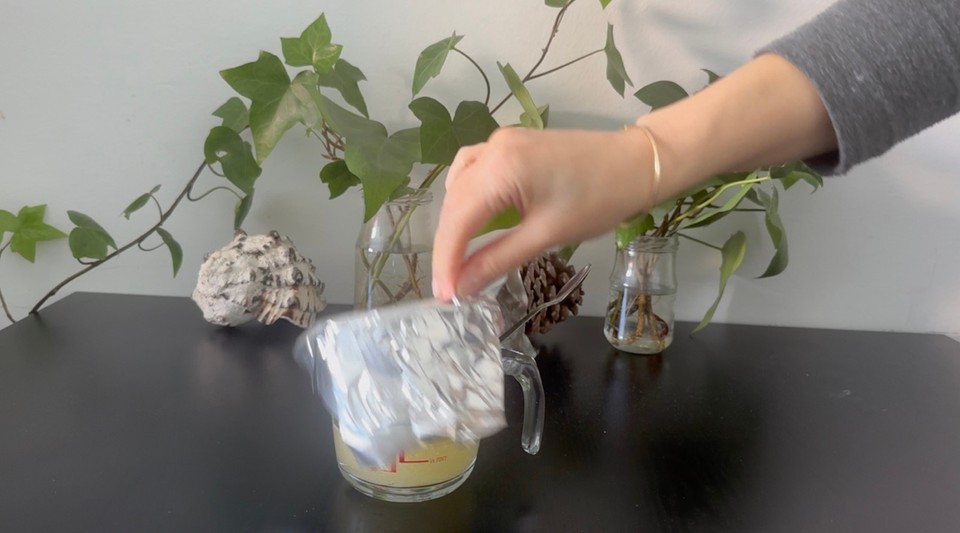
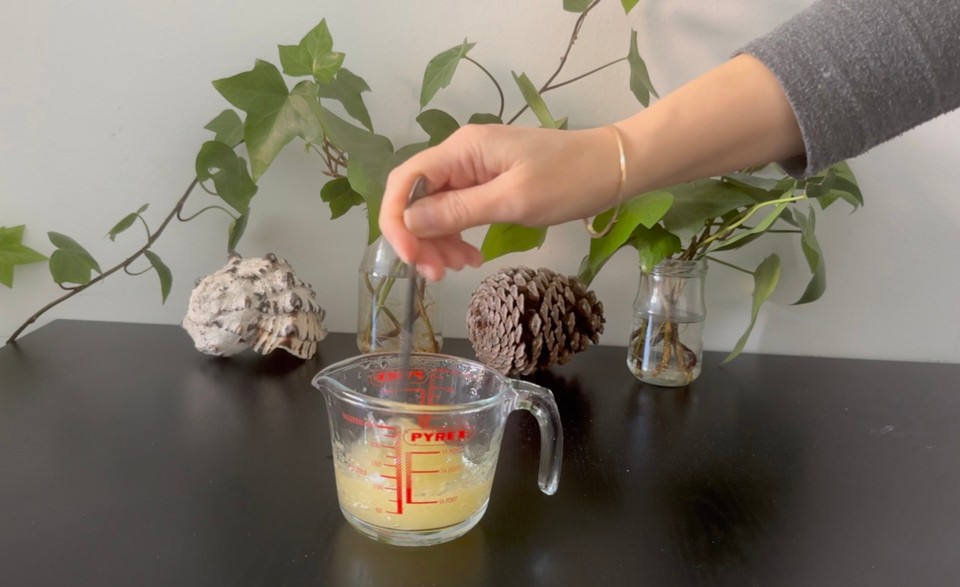

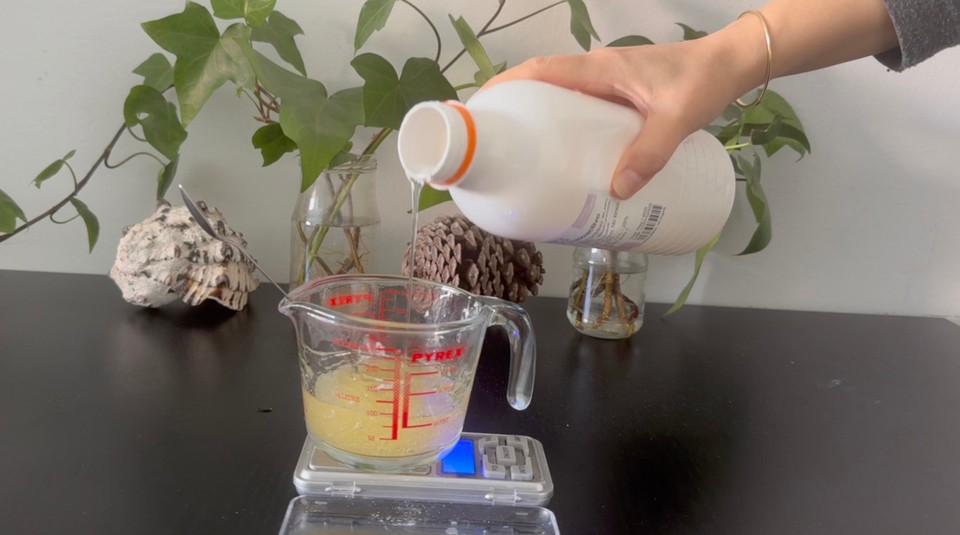
Add phase D the citric acid, and mix gently to combine.
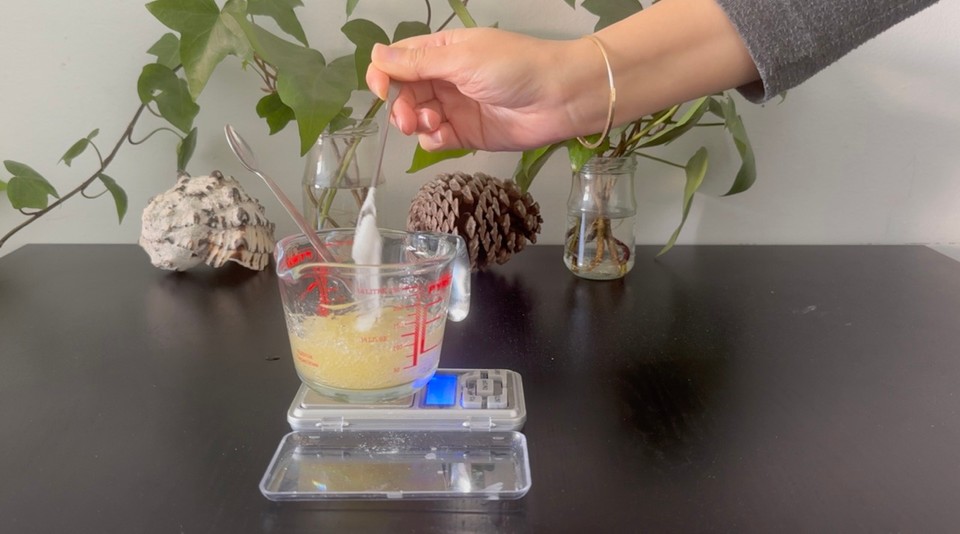

Add phase E and mix to combine.
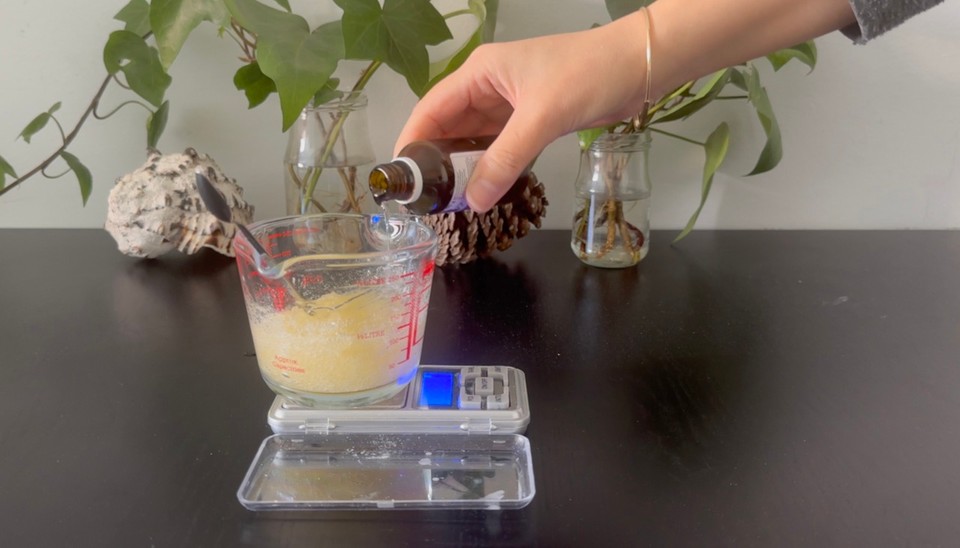
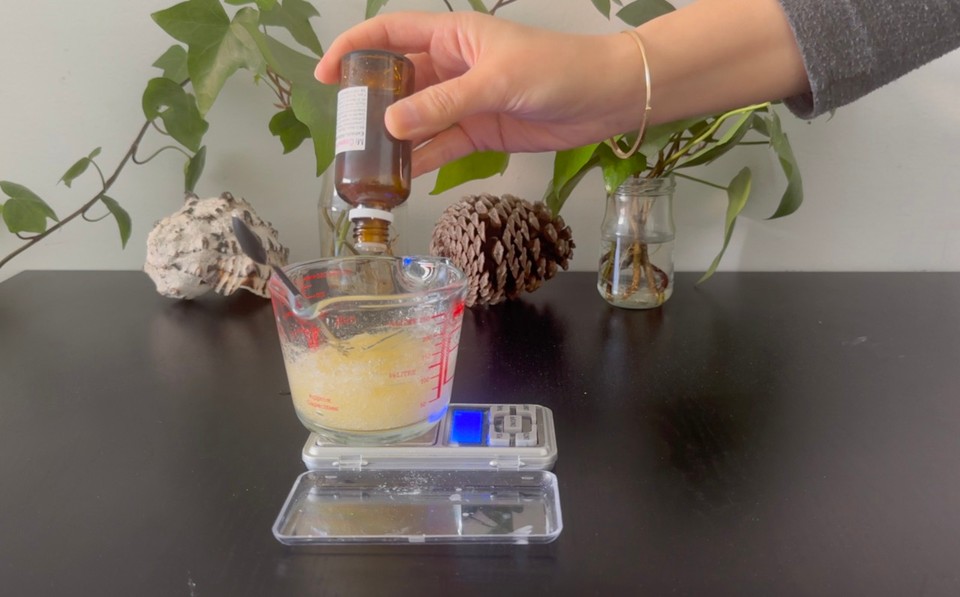
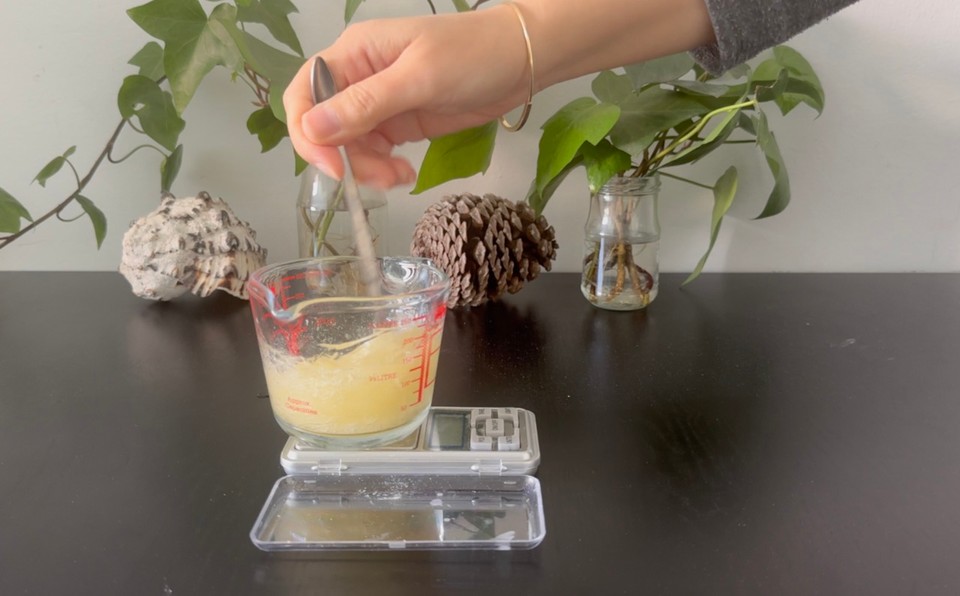
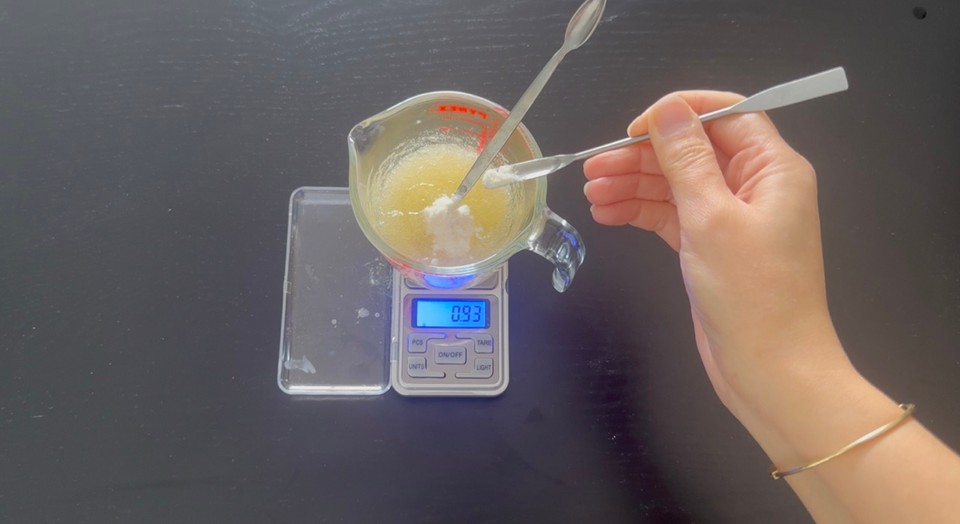
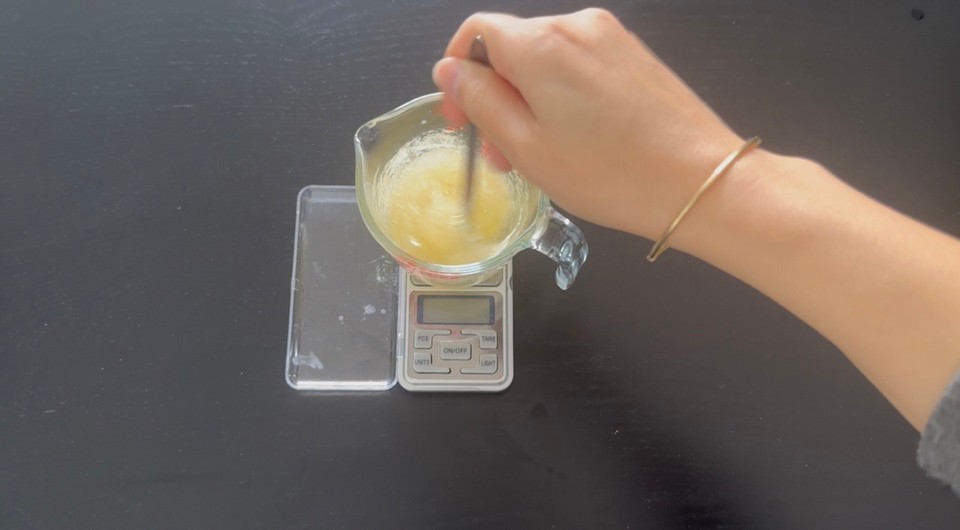
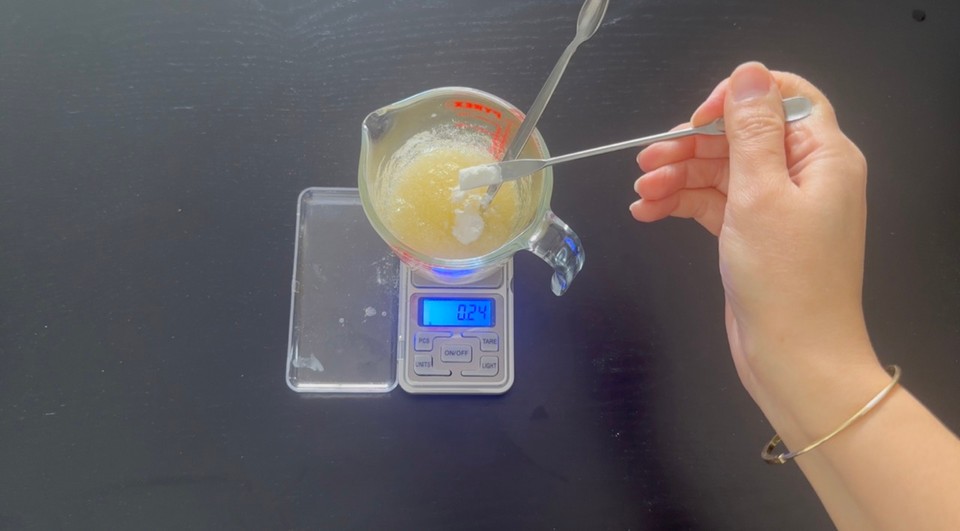
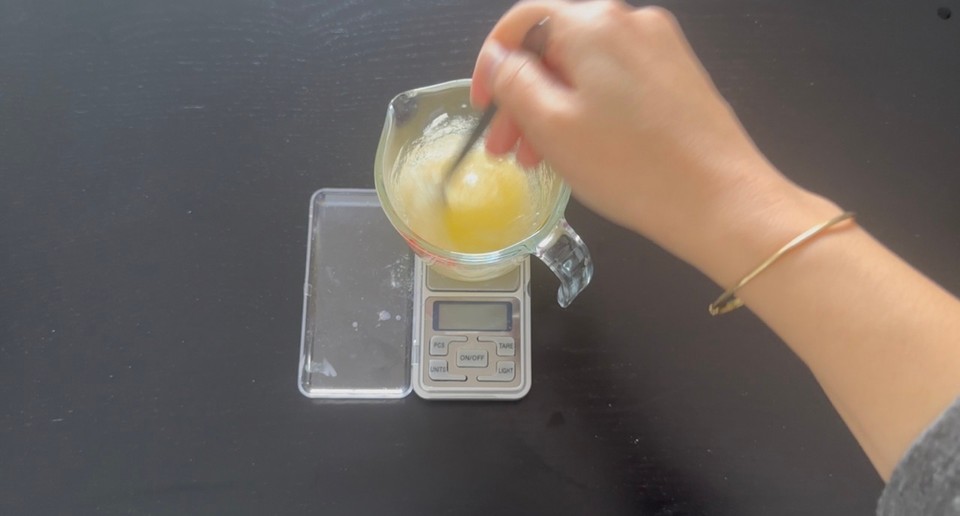
Add phase F (the preservative) and mix to combine.


If you want to add color, add a few drops of the color and mix to combine.
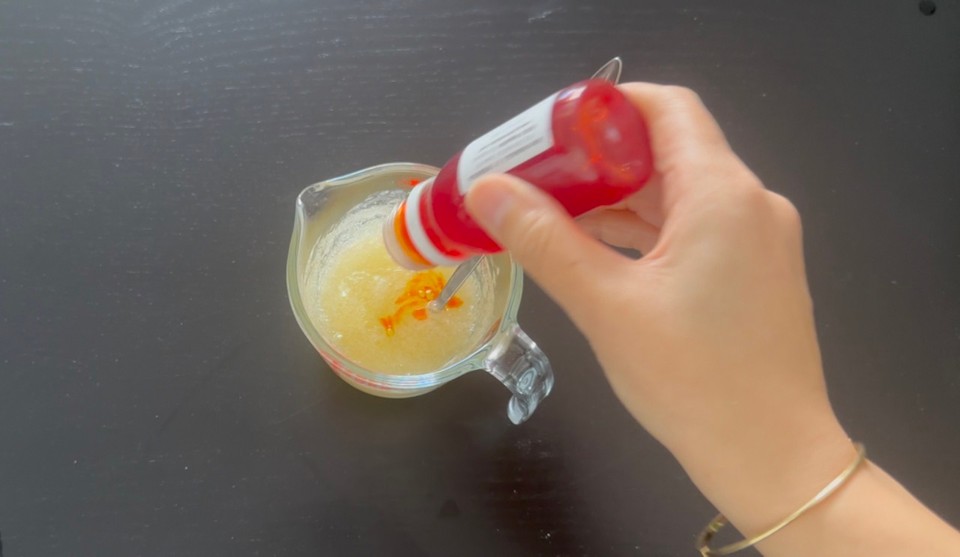
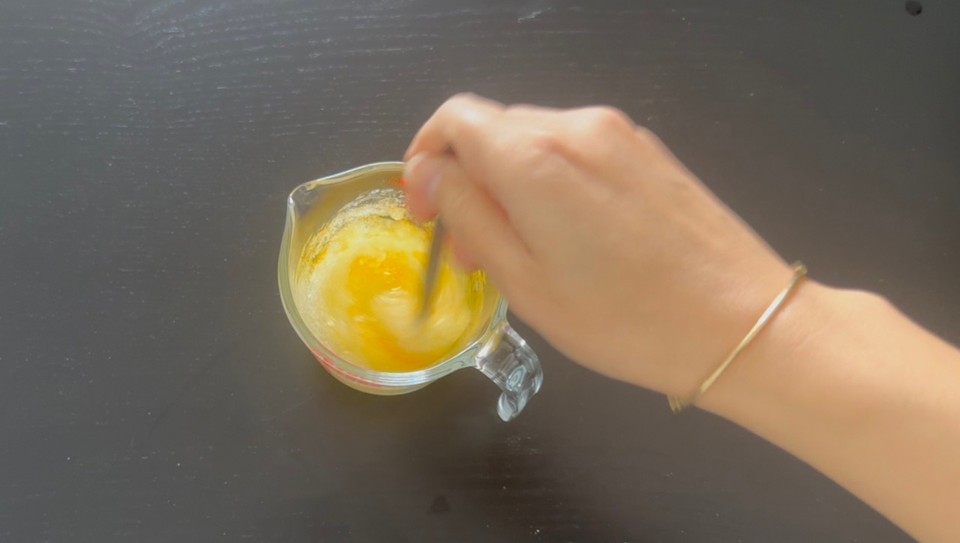
Check the pH and adjust if necessary. More about pH adjustments here.

Let the face mask rest for a couple of hours, then pour it into a container of choice.

